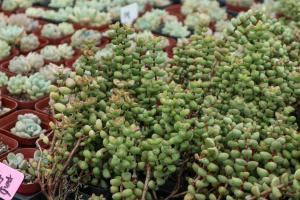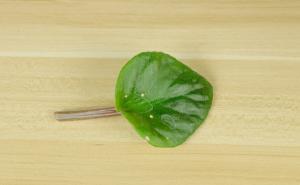How to Grow Outdoor Plants in Pots: A Comprehensive Guide
Gardening can be a challenging task, but the results are always rewarding. If you live in an apartment or have limited garden space, it's still possible to grow outdoor plants in pots. This article will provide a comprehensive guide on how to grow outdoor plants in pots, from selecting the right container to choosing the best plants for your space.
Choose the Right Container
The first step in growing outdoor plants in pots is choosing the right container. Several factors need to be considered when selecting a pot, including size, material, and drainage. A pot that's too small will restrict root growth and limit the plant's ability to take in nutrients and water. At the same time, a pot that's too large can also be detrimental to plant growth, as excess soil can retain too much moisture, leading to root rot.
The material of the pot can affect plant growth as well. Clay pots are great for plants that don't require much watering, but they can also be heavy and break easily. Plastic pots, on the other hand, are lightweight and durable, but they're also prone to cracking and fading in sunlight. Finally, drainage is crucial for plant growth, so make sure the pot has holes at the bottom to allow excess water to flow out.
Choosing the Right Soil
The second step in growing outdoor plants in pots is choosing the right soil. The soil in a pot can make or break a plant's growth. When selecting soil, consider the plant's needs, the container size, and the climate in which the plant will be growing. For outdoor plants, you may want to choose a soil mix that includes compost, vermiculite, or perlite to improve water retention and drainage.
Watering Your Plants
Proper watering is a crucial part of growing outdoor plants in pots. Overwatering can drown the plant and lead to root rot, while under-watering can cause the plant to dry out and wither away. The amount of watering required depends on the plant's requirements but generally, plants need water when the soil feels dry to the touch. When watering, make sure to saturate the entire root system to encourage growth and prevent dry patches from forming.
Feeding Your Plants
Plants need nutrients to grow, and while soil can provide some essential elements, it may not always be enough. Depending on the plant's needs, you may need to supplement the soil with fertilizers or other plant foods. Be careful not to over-fertilize, as this can also harm the plant. Check the fertilizer packaging for recommended quantities and application instructions.
The Best Plants for Outdoor Pots
Finally, the last step in growing outdoor plants in pots is selecting the best plants for your container garden. The plants you choose will depend on the amount of light, space, and attention you can devote to them. Some great outdoor plants for pots include herbs, flowers, and small shrubs like lavender, petunias, and baby's breath. If you're feeling ambitious, you can even try growing fruits and vegetables in pots like cherry tomatoes, strawberries, and peppers.
In conclusion, growing outdoor plants in pots is a great way to add some greenery to your space, even if you lack a traditional garden. With the right container, soil, watering, feeding, and plant choices, you can create a stunning container garden that will thrive throughout the seasons and provide plenty of rewards for your efforts.

 how many times do yo...
how many times do yo... how many planted tre...
how many planted tre... how many pine trees ...
how many pine trees ... how many pecan trees...
how many pecan trees... how many plants comp...
how many plants comp... how many plants can ...
how many plants can ... how many plants and ...
how many plants and ... how many pepper plan...
how many pepper plan...
































